Most fitness bands have a problem. Two problems, actually. They’re ugly. And they’re uncomfortable to wear. And that’s costing wearable tech companies business.
It’s true: Beauty matters and ���������.��Worldwide annual watch sales total $50 billion—a huge business that Apple wants a part of. But the traditional luxury labels won’t relinquish their market share without a fight. And they have a secret weapon: those good looks.
At the Baselworld watch expo in March, brands from Swatch to Mondaine said they plan to incorporate “smart tech” features—including text forwarding and on-wrist payments—into their new products launching later this year. Megadeluxe brand TAG Heuer even partnered with Intel to make a full-fledged Google Android watch.
Some of these efforts will fail. Unlike most watchmakers, Apple is a technology company, and it has a history of combining function, fashion, and tech. Luxury brands have a history of making old technology look pretty, but now have to integrate new features.
That’s a tough task, and nobody’s sure that it’s achievable. In the meantime, new upstarts have entered the market. And we’re excited about what we see.
Withings Activité Pop ($149)
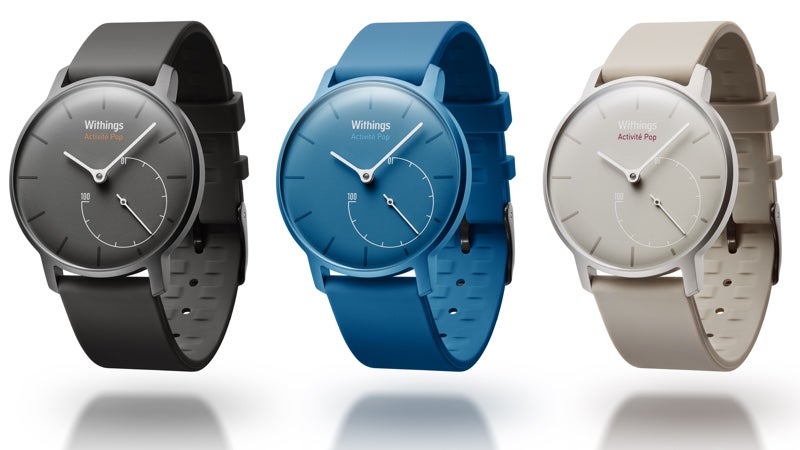
Pros: The Activité Pop looks like a normal wristwatch and has a thin, lightweight profile. It tracks steps; knows if you’re swimming, running, or sleeping; and is powered by a coin cell battery (so it doesn’t need to be recharged). We love that you can customize the watchband. It pairs via Bluetooth to a slick, intuitive app that works on either iOS or Android. The best-looking wearable for the price.
Cons: It can’t map your trail run or measure heart rate.
Misfit Flash ($50)
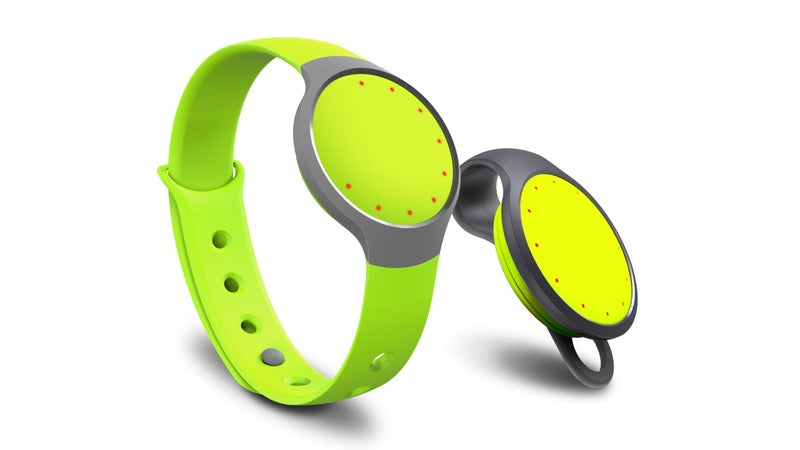
Pros: It’s hard to argue with the Misfit formula, which basically states you should be able to swim, bike, work out, run, and sleep while wearing this device on any part of your body (the strap is long enough to fit around an ankle, and the pendant system enables attachment to a keychain). You almost never have to recharge it, and the Flash is lightweight, durable, and, if not beautiful, at least cool looking in a techie sort of way.
Cons: No wrist-based display. And while the Flash can count steps and the duration of your activity, it can’t track distance.
Zensorium Being ($170)
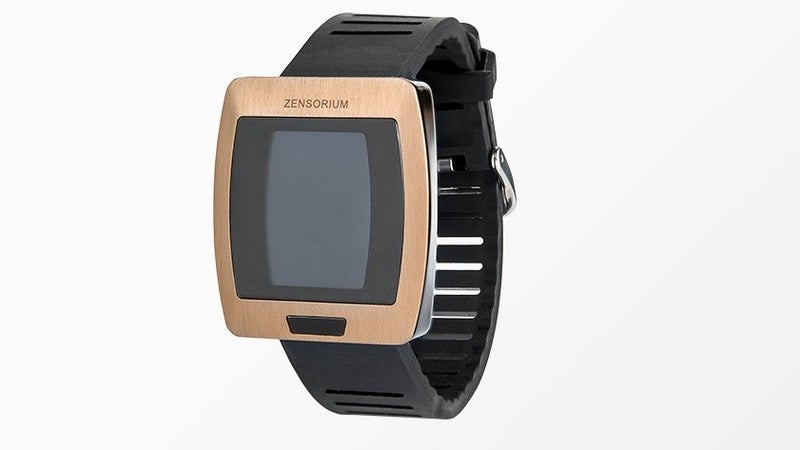
Pros: Most wearables collect a lot of data but don’t tell us how to use that information. The Being, on the other hand, tracks steps, distance, heart rate, and heart rate variability (essentially the interval between beats) and interprets this data. It can tell if you’re stressed, and if you are, offers a biofeedback program that helps you stay calm. Based on a demonstration I saw in January, I’d say it has a lot of potential, is intuitive to use, and actually seems diagnostic.
Cons: No test samples yet, so we can’t definitively say how well the Being does any of these things. The demo was impressive, but we’ll need to test it to see how well it captures heart rate (on-wrist sensors we’ve tried have often proven inaccurate) and how well it can diagnose stress. Sensorium also says the watch will be able to measure changes in blood pressure but hasn’t revealed the tech that makes that possible.
Montblanc TimeWalker Urban Speed e-Strap ($3,750 with TimeWalker Chronograph; $418 for the strap only)
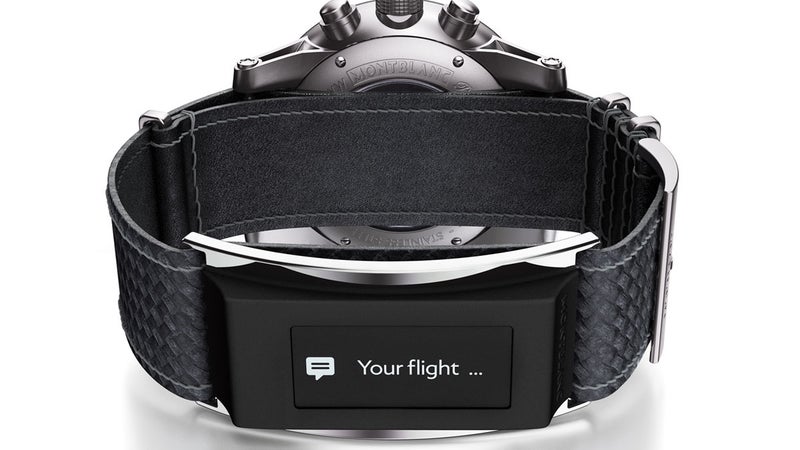
Pros: Montblanc uses all the real estate on your wrist with its leather e-Strap, which combines the functions of a tracker with the traditional mechanical chronograph. The e-Strap can control your phone via a provided app (compatible with Android and iOS devices) and tracks steps and distance.
Cons: The strap alone costs more than the basic Apple Watch. But the idea of a smart strap, not just a smartwatch, is an important innovation for folks who prefer a classic luxury watch but want some of the fitness features of a true smartwatch.
Pebble Time Steel ($199)
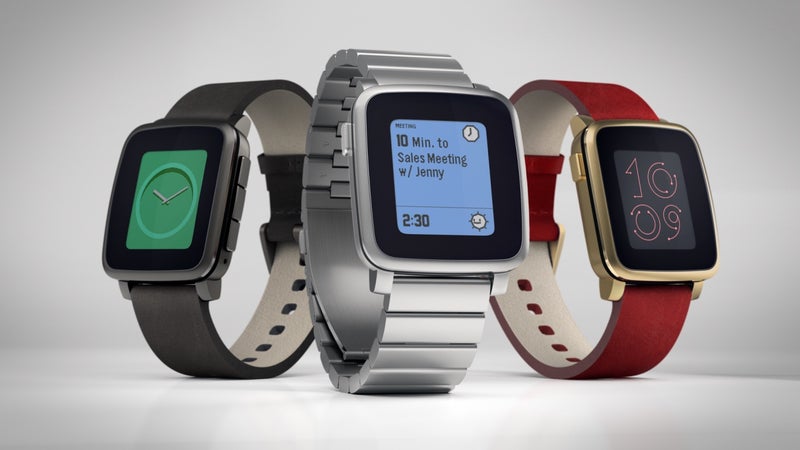
Pros: We like Pebble’s simple design and new timeline-based operating system. And we especially like the smartphone-agnostic approach (Pebble can sync with either iOS or Android). The Time Steel, which nearly broke Kickstarter (and smashed fundraising records), has grown up to feature a color e-ink screen and metallic case. As the watch gets sleeker, it also gets thinner, with a lower profile than most of its competitors.
Even more exciting: Pebble just announced a new . One of the two highlighted straps includes a built-in heart rate monitor, remote payment system, and GPS. The other acts like a clone of your SIM card, allowing you to leave your phone behind during exercise but retain connectivity.
Cons: Pebble, like most smartwatches, relies on a phone for full functionality. And for some reason, a few of our favorite fitness apps, like Strava, are only available for pairing via Android, not iOS.
Apple Watch ($350)
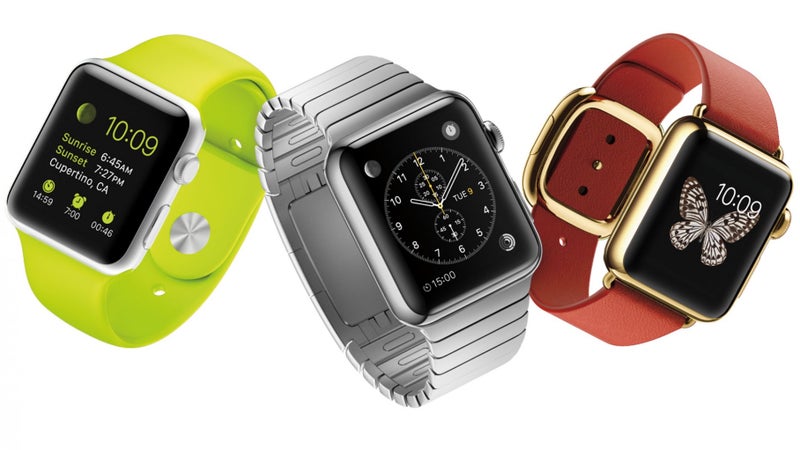
Pros: Apple created a unique interface, the digital crown, to control the device. This will likely be huge: If you’ve tried tapping and swiping on a tiny screen, you know that the interface is often buggy. Apple Watch will run on apps that emphasize images and logos, not writing. That’s going to spur developers to think more about design than they have in the past. Finally, thanks to designer Jony Ive, the hardware is simply stunning.
Cons: We’re curious about how well Apple Watch will function as a fitness tracker. The battery life will likely be limited at first, and the price is high, starting at $350 and going well north of $5,000.


